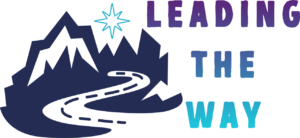What Cold Calling Appointment Setting Really Means Today
Cold calling appointment setting isn’t just about dialing a number and hoping for a yes—it’s a refined outreach strategy designed to initiate meaningful sales conversations. At its core, this process involves reaching out to potential clients who may not be familiar with your business, with the aim of booking a future meeting. Unlike traditional cold calls that aim for immediate sales, appointment setting is more strategic. It focuses on opening the door rather than closing the deal. In today’s world of saturated inboxes and automated messages, the human element of a live call can stand out. Done well, cold calling still delivers impressive ROI for B2B and B2C businesses alike. It’s not outdated—it’s just misunderstood and underutilized by many who haven’t adapted to modern techniques.
The Key Elements That Make Cold Calling Appointment Setting Effective
To succeed in cold calling appointment setting, you need more than just a phone number and a script. It begins with creating a message that resonates. This means understanding who you’re calling, what problems they face, and how your offer can genuinely help. The psychology of decision-makers plays a critical role—knowing how to communicate value quickly is key. Your tone, timing, and pace matter just as much as your words. One of the most overlooked aspects is emotional intelligence: being able to adjust based on the prospect’s mood or personality type. Rapport-building is essential within the first few moments of the call. When all these elements align, you drastically improve your chances of booking a qualified appointment.
Step-by-Step Breakdown of a High-Converting Cold Call
Every high-performing cold calling appointment setting strategy follows a process. First, identify and research your leads—don’t just rely on a list. Use platforms like LinkedIn, company websites, or CRM data to understand who you’re calling and what might matter to them. Begin your call with a confident and respectful opener, stating your name, company, and the reason for reaching out. This is not the time to pitch—it’s the time to ask smart, relevant questions. The best appointment setters ask more than they talk. When objections come up (and they will), respond calmly with empathy and clear value-driven answers. If the conversation goes well, propose a specific time and date rather than asking if they’re interested. Make it easy for them to say yes.
Tools and Technologies That Make Cold Calling More Efficient
Cold calling in 2025 is powered by tools that optimize productivity and performance. Start with a quality CRM to organize and track your leads—this ensures no opportunity slips through the cracks. Auto-dialers can increase your calling volume significantly while reducing downtime between calls. Call recording and analytics tools allow you to study your top-performing calls and coach your team effectively. AI-powered tools now assist with real-time conversation guidance, objection handling prompts, and predictive dialing. Integrating email and SMS into your cold calling appointment setting workflow can further improve response rates. Technology should never replace human interaction but should enhance your ability to connect, convert, and follow through.
Common Cold Calling Mistakes That Sabotage Appointments
One of the biggest mistakes in cold calling appointment setting is sounding like a robot. Overly scripted calls come off as disingenuous and will likely be shut down quickly. Another major issue is skipping qualification—without understanding if the prospect is a good fit, you risk wasting time for both parties. Many callers also fall into the trap of information dumping instead of having a dialogue. Cold calling should be a two-way conversation, not a monologue. Another common misstep is poor follow-up or no follow-up at all. Just because you don’t book on the first call doesn’t mean the lead is dead. Lastly, failing to prepare mentally for rejection leads to demotivation and burnout, which shows in your calls. Avoid these pitfalls by approaching every call as a valuable interaction.
Strategies to Boost Your Appointment Setting Success Rate
Small shifts can create big wins in cold calling appointment setting. Start by warming up your prospects through light engagement—comment on a LinkedIn post, or send a personalized email before calling. Timing also plays a role; research shows late mornings and mid-afternoons are peak times to reach decision-makers. Personalization goes beyond using someone’s name—mentioning a recent company achievement or referencing industry trends shows you’ve done your homework. Instead of rigid scripts, develop flexible conversation frameworks that allow you to adapt on the fly. Always lead with value, not features, and end each call with a clear next step. Tracking your metrics—like call-to-appointment ratio—helps you iterate and improve consistently.
How to Train a Winning Cold Calling Appointment Setting Team
Building an effective team starts with hiring individuals who are coachable, resilient, and comfortable with rejection. Product knowledge and communication skills are trainable, but mindset is foundational. Role-playing is an excellent tool for sharpening responses to real-world objections and boosting confidence. Regular call reviews, both live and recorded, offer valuable feedback and learning opportunities. Set clear KPIs—such as number of calls, connects, and appointments booked—while allowing room for creativity. Recognize and reward progress, not just wins. Motivation also matters—gamifying your team’s efforts or running incentives can keep energy high. Most importantly, create a culture of learning, where your setters feel supported, not pressured.
Cold Calling Appointment Setting for Different Industries
The approach to cold calling appointment setting varies based on the industry. In B2B sectors like software and consulting, longer buying cycles mean more emphasis on qualification and relationship-building. Here, your focus should be on setting discovery calls rather than pushing demos too soon. In B2C verticals such as real estate or insurance, urgency and emotional connection matter more. Knowing how your industry’s decision-makers prefer to be approached—via direct lines, receptionists, or even social media—can give you an edge. Tailoring your script and objection handling to the specific pain points and language of the industry is crucial. Whether you’re selling digital services, physical products, or financial advice, relevance and timing are everything. Success lies in refining your message for the person, not just the market.
Scaling Cold Calling Appointment Setting for Business Growth
When your cold calling appointment setting efforts start delivering results, it’s time to think scale. One path is building an in-house team—this offers full control, culture alignment, and brand voice consistency. The other option is outsourcing to experienced agencies that specialize in appointment setting. Each has trade-offs; in-house teams may take longer to ramp up, while outsourcing may offer faster results with less internal bandwidth. Standardizing your call scripts, CRM process, lead qualification criteria, and handoff procedures is essential either way. Use analytics to optimize your campaigns—track show rates, conversions, and call quality. Cold calling should be just one piece of a larger outbound engine, integrated with email, content, and social touches. With the right process and people in place, cold calling can become a scalable, revenue-driving machine.
Frequently Asked Questions (FAQ)
Q1: How many calls per day should an appointment setter make?
A good benchmark is 80 to 100 calls per day for full-time setters. However, quality matters just as much as quantity. Tracking connects and conversion rates offers better insights into performance than raw volume alone.
Q2: What’s the ideal length of a cold call when setting appointments?
Most appointment-setting cold calls should last between 3 to 7 minutes. The goal is not to close the deal but to qualify interest and secure a scheduled meeting.
Q3: What’s the difference between an appointment setter and a sales closer?
An appointment setter’s role is to generate interest and schedule a meeting, while a closer handles the deeper sales conversation and secures the final commitment or contract.
Q4: How long does it typically take to see results from cold calling?
Results can begin within a week if the leads are qualified and the messaging is tight. Most businesses see solid traction within the first 30 to 60 days of consistent outbound efforts.
Q5: Is cold calling still effective in 2025?
Absolutely. When paired with personalization, modern tools, and a refined process, cold calling remains one of the most direct and scalable methods to initiate business conversations.

